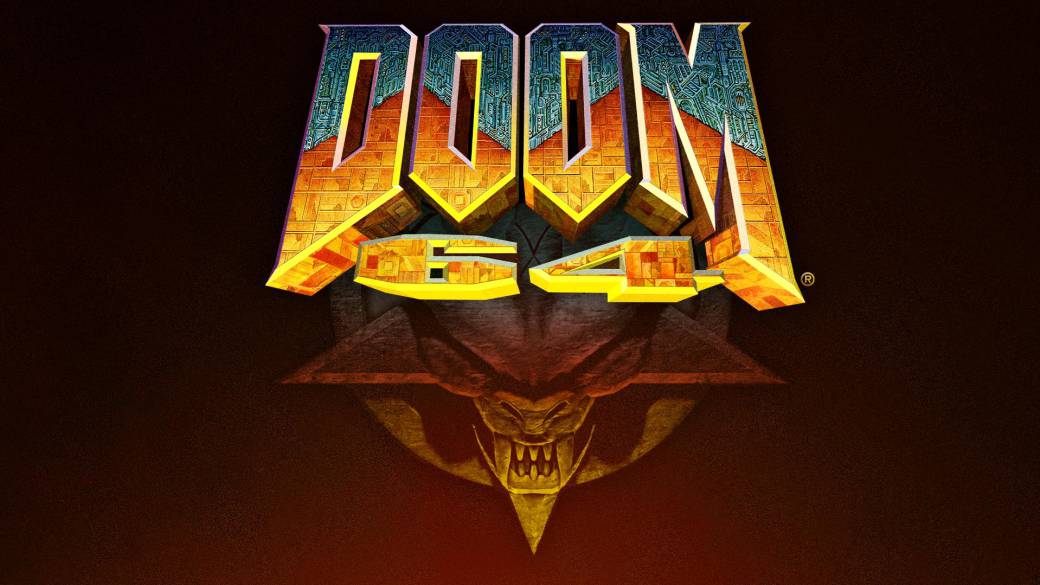
The forgotten installment of the Id Software saga finally hits modern platforms. DOOM 64 is a classic, and now also more accessible than ever.
In the mid-1990s, bits were so ingrained in console discussions that Nintendo not only decided to name their third desktop console in honor of processor power, but brought that idea to the titles of the games themselves for added emphasis. Super Mario 64, Pilotwings 64 or Wave Race 64 will always remain as vestiges of a revolutionary era, but also self-conscious in a way that would now invite more cynicism. It was a curious marriage between technology and marketing that third party companies soon saw lucrative potential. From exclusives like Bomberman 64 or Wipeout 64 to multiplatforms like FIFA 64 or Duke Nukem 64, the indiscriminate use of the tag deflated its meaning and, in a world with less access to information than the current one, ended up raising doubts about whether it involved a game new generation or a port with extra content. One of the victims of this phenomenon was DOOM 64.
Developed by Midway under the supervision of Id Software, the project broke the usual trend of adapting the originals with worse results than on PC: both companies collaborated on a modification of the engine that fit both the strengths and limitations of Nintendo 64 to give life to a completely new campaign, with levels built from scratch, and redesigned weapons and enemies with various new features in the mix. DOOM 64 was DOOM 3 in anything but name and was to be released alongside the console as its first FPS. But as the launch approached, Id considered that the product was not up to the circumstances and delayed it to 1997, where it ended up coming to the tail of Turok in America and GoldenEye itself in Europe. The direct comparison with FPS of more innovative graphics and concepts did not leave in the ideal place a work that in many cases was also accompanied by that confusion about its nature as a new delivery or port. As a consequence, DOOM 64 passed without pain or glory and was relegated to an anecdotal, often forgotten, chapter of the saga. Luckily, we can now rewrite it.
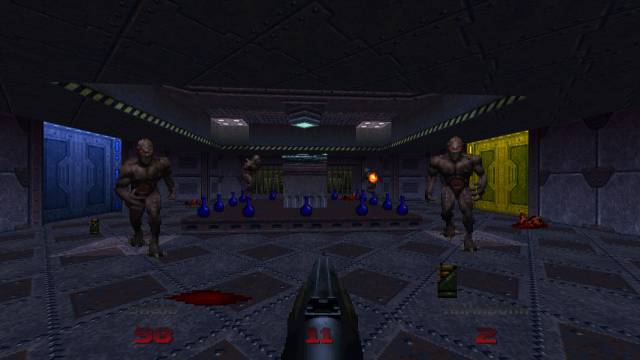
The return of the prodigal son
Because the arrival of DOOM 64 to PC, PS4, One and Switch, although again in the background to coincide with that of DOOM Eternal, is a historic event. Although the PC community has already done its part and did rescue it from oblivion years ago – first by redoing it in the original engine, later adapting the modified N64 – the version that now comes to us from Nightdive Studios (also responsible of Turok's remasters and its sequel) marks the first official relaunch in the 22 years since its release. The fact that a delivery of one of the most portrayed sagas in the world has taken more than two decades to lose its exclusivity – again, officially – is already an interesting curiosity in itself. But what makes DOOM 64 something worthy of sitting down to talk or, more importantly, playing on our platform of choice, is DOOM 64. The game as such, without the need to rely on symbolism or nostalgia.
It is true that the years do not pass in vain, but it is also true that the feeling of inter-epoch gaming that could once be given by resorting to 2D images on a console with some ease drawing 3D models is now put under another perspective. At first glance, DOOM 64 looks like games released several years before, but the customized version of the engine allowed seasoning a timeless gunplay with improvements such as sprites at higher resolution, new visual effects, greater color depth, a more advanced lighting system and scripts. that more severely alter the design of the levels in real time. All this without falling into the performance problems characteristic of other console shooters. It was more a display of efficiency than of experimentation, but one wisely put at the service of both the setting and the design, and that in the long distance race has left DOOM 64 at the height – when not above – of the legendary duo of Id.
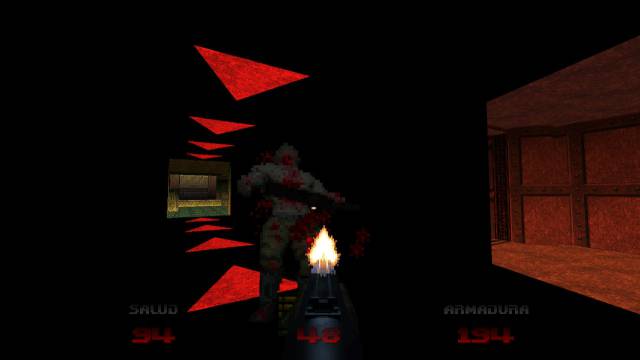
Towards the Dark
The first and most obvious observation about this installment compared to the originals is that it is a darker game, both in terms of its atmosphere in an ethereal sense and in terms of light properties in the literal sense – to the point that in its day it was decided to raise the default brightness for the European launch in the face of complaints in America. That said, in the current version nobody should have problems, since in addition to the notable increase in image resolution, the brightness has been adjusted to prioritize the correct visibility, although each player can then calibrate it (with bars dedicated to general and environmental values). ) based on your preferences. This, together with the increase in framerate – the 30 fps of the original was stable, but the current 60 fps make all the difference – make the relaunch a powerful cocktail with an oppressive atmosphere and fluid gameplay.
In terms of gunplay, DOOM 64 preserves the foundations of the previous ones. This means that the movement is extremely fast (on consoles we recommend assigning a “run” to a trigger to change the rhythm with greater comfort) and the aiming takes place in a plane –no jumps or vertical aiming–, so the combat loop It consists of positioning ourselves correctly to hit enemies while we move away from their fire so as not to end up becoming a marine strainer. The result is a gameplay as simple as kinetic, very visceral, which evolves as more weapons and types of enemies are added or the design itself twists the encounters. The fact that it was born without looking at the possibilities of the mouse gave rise to certain limitations, but also to a style of play that adapts well to any control and does not accuse the passage of time in the same way as the first attempts at a use most ambitious of the three dimensions.
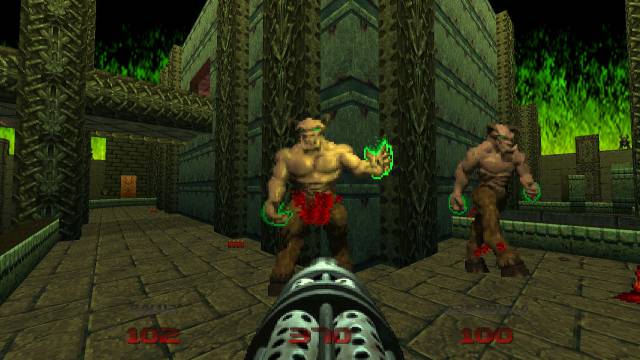
Fantastic demons and where to find them
Paradoxically, it's also easy to see a bit of Quake in this installment. Upon arrival at Nintendo 64, Id Software had turned the DOOM page and was immersed in a new technological revolution at the hand of its next great saga on PC, now fully 3D and much more advanced in geometry and lighting. Despite still being built on the foundation of DOOM 1 and 2, DOOM 64 managed to push a bit in that same direction, offering levels with more complex structures, texture gradients, and even an aesthetic finish more similar to Quake in some scenarios. . Designed to run on televisions with lower resolution than computer monitors, the result was surprisingly effective and still maintains the type in the new conversion, betraying its association to the DOOM engine only by the frequent – and evident – use of 2D images to recreate various decorative items, ammunition, medicine cabinets or, of course, enemies.
As we said before, it is the facet that ages DOOM 64 the most, although it has its positive counterpart. Because far from recycling work with the original sprites, Midway followed Rare's path with Donkey Kong Country and turned to Silicon Graphics technology to scan new and better 3D models. It goes without saying that integrating the resulting images into the scenarios is not as natural as in side scrolling games because of the visible transition between a limited number of perspectives, but the technique opened the door to more elaborate designs, with attention to small details. as shaded, and that also allows a higher number of simultaneous enemies on the screen. A good concession that shines above all in the medium and long distance, where the pixels are more hidden. Related to this, the version in question applies a filtering of textures that softens the image as the Nintendo 64 itself did at the hardware level, although it can be deactivated if we prefer greater clarity and concordance with native PC deliveries.
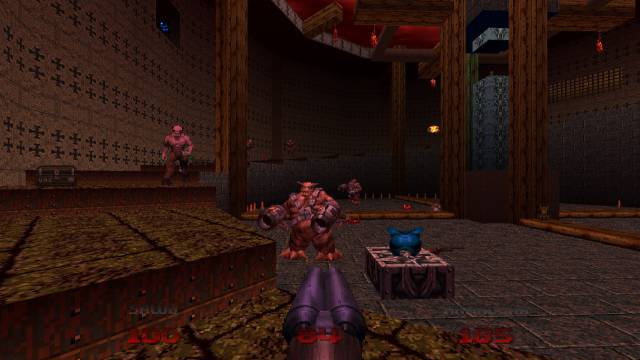
Lost in the maze
Speaking of options, another point that we cannot stop doing has to do with music, adjusted by default to such a low volume that you should definitely remedy it as soon as you start a game. For the soundtrack Midway had Aubrey Hodges, who had already participated in the joint port of DOOM 1 and 2 for the first PlayStation (also in charge of Midway) changing the famous compositions of Bobby Prince for others of a more environmental and dark cut. DOOM 64 followed in the wake of that review, but being created from scratch by the new team benefits from a greater synergy between visual and sound design. Even at maximum volume, the music often disappears to leave us alone with the grunts of the monsters, or reappears in the form of unintelligible sounds that can hardly be counted as music. Others, on the other hand, do take a more melodic look and surprise us with a disturbing beauty, matching the bluish mists or the green flaming skies of some corners of hell.
Perhaps the decision, questionable as it is, derives from the need to be guided by the ear to track the effect of mechanisms on stage. Among the shootings, DOOM 64 proposes an even more intricate exploration than the original ones: from them it rescues the search for red, blue and yellow keys to open doors of their respective colors, but also frequently uses switches that open other accesses or make appear new parts of the stage, intermediate requirements such as defeating certain enemies or even some contextual puzzles. It's a dense game, occasionally obtuse, and heavily backtracked even by DOOM standards. The map, in this installment coded both by design and by type of structure, ends up being a must, and even that does not save us from falling into a certain trial-error looking for new routes after activating mechanisms without a clear function. It is, perhaps more than the combat itself (especially after the implementation of saving and quick loading), the main obstacle that players have to face, especially those accustomed to shooters with GPS or linear designs. DOOM 64 is "old school" and may hide your keys, but not your intentions.
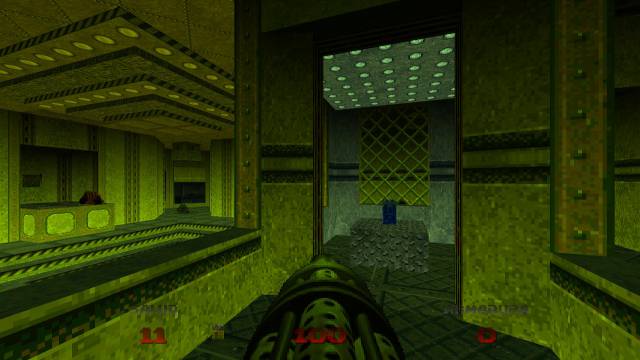
The Lost Levels: Expanding DOOM 64
Continuing with the levels, we can not close without treating the ones that this relaunch releases. Extending the games months or years after their release is a tradition of the saga, but even so it is surprising that they have decided to do it again in the middle of 2020 with a delivery for so many unpublished, and that on top of that the effort has given such good results. The new set is titled The Lost Levels, it consists of six phases of considerable size (plus a bonus) and goes both numerically and chronologically after the original campaign. In theory it reinforces the condition of DOOM 64 as a prequel to DOOM 2016, although as you can imagine, the narrative weight is minimal. The attraction lies in enjoying new content, and in this sense, although it is true that it uses graphic and playable elements already present in the 1997 version, it manages to build a very solid mini-campaign with them.
Although subtle, the most modern sensibility is noticeable at demanding levels –in the end, they link to the end of the base game–, but less prone to unfair situations such as lock-ups or forced deaths by falling into traps. In fact, one of her greatest strengths is to rethink the final mission using the apology that the Demon Queen has a twin sister, and by doing so she finds a more interesting and fun way to execute the same idea as Midway herself. It should be noted that The Lost Levels, unlike other expansions of this class in previous DOOM, is not accessible a priori until we complete the original game, although luckily the game maintains the Nintendo 64 password system (compatible with the new version). ) and we can unlock the full level selection at any time. It is the perfect icing on a cake so many years expected.
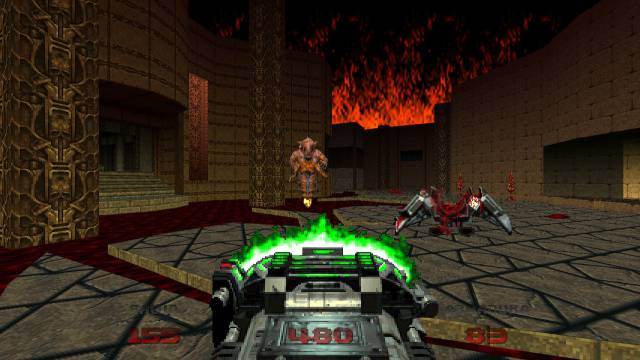
CONCLUSION
Nightdive Studios brings us not only one of the most necessary playable restoration exercises of recent years, but also one executed almost perfectly. The hitherto exclusive Nintendo 64 – at least officially – comes for the first time to a selection of modern platforms with better image quality, better performance, new functions (quick save, vibration, compatibility with gyroscopes …) and even a handful of brand new levels. The game as such is a product of its time and it will hardly convert those who were not already fans of running shooters. But even after playing the originals, their ports or mods created by other fans a thousand times, this installment stands as a work with its own personality, distinctive for its setting and design. It is a dark game in the polysemic sense of the word, but also one that stimulates our hands with each shotgun and our minds with each maze. They say that time does not pass in vain, and it is true. But in this specific case, its long disappearance serves to create an aura that later, surprisingly, it is capable of maintaining already with the control in the hands. DOOM 64 is back and the medium is a little bit better for it.
THE BEST
- First relaunch of a virtually new DOOM for most of the public.
- Exemplary restoration work with better image quality, new features and a wide range of options.
- Masterful setting, almost as good as two decades ago.
- The unpublished levels are good and lengthen an already substantial campaign.
WORST
- Backtracking can be blunt for modern palates.
- Some ambushes and difficult peaks not fair.
Very good
Game with a remarkable finish that we will enjoy and remember. A good purchase, highly recommended for lovers of the genre. It is well cared for at all levels.
